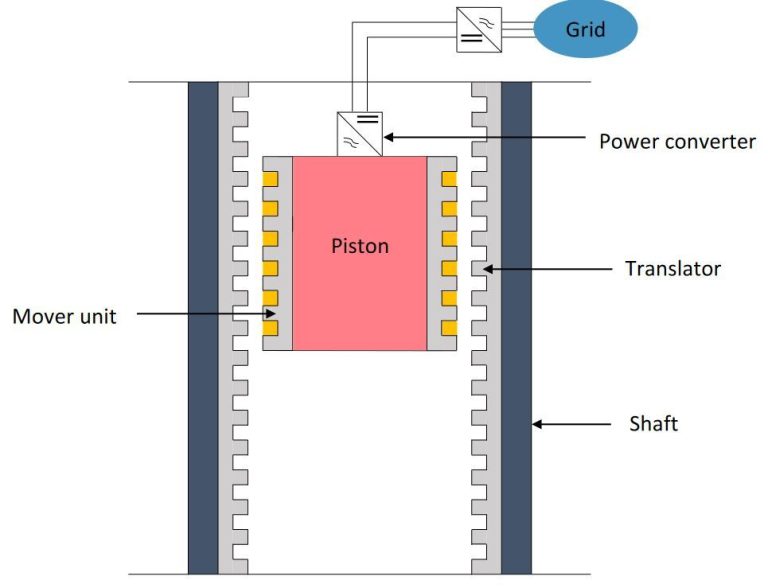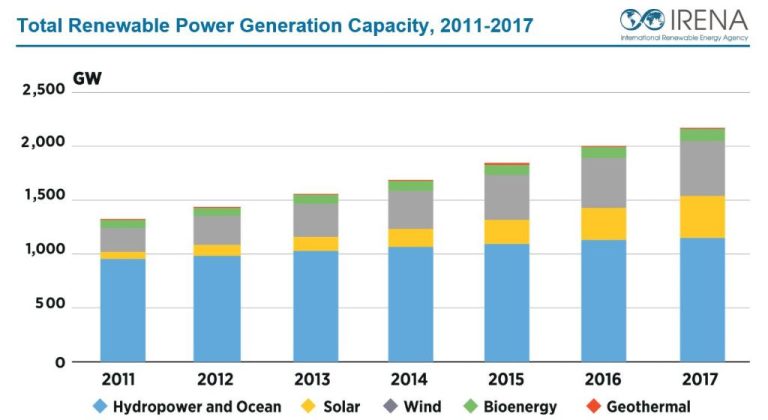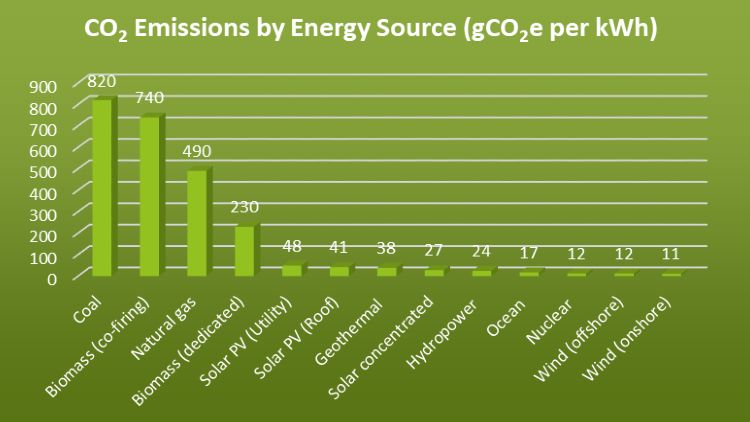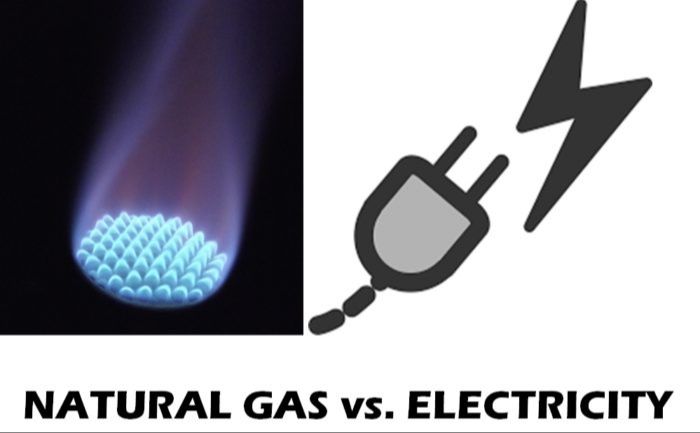How Is Potential Energy Related To Gravity?
Definition of Potential Energy
Potential energy is stored energy based on the position or configuration of an object within a force field. An object gains potential energy when it is moved against an opposing force. The two most common types of potential energy are gravitational potential energy and elastic potential energy.
Gravitational potential energy arises from the height of an object above some reference point, such as the ground or floor. As an object is raised, it gains gravitational potential energy relative to that reference point. The gravitational potential energy comes from the gravitational force pulling down on the object. The higher the object, the greater its potential to fall under gravity.
Gravity Creates Potential Energy
Gravity is a force that pulls objects toward each other. When you lift an object up, you are working against the force of gravity. The energy required to lift the object comes from your muscles. As you lift the object higher, you do more work against gravity, and the object gains more potential energy. The potential energy comes from the work done against gravity, and it is stored in the object’s elevated position. The higher the object is lifted, the greater the potential energy that the object gains due to gravity pulling it back down.
For example, if you lift a book from the floor up onto a table, you do work by applying force to overcome gravity. The gravitational force pulls the book back down towards the floor, while your force lifts it up. When the book is sitting on the table, it has potential energy that can be released when it falls back down. The higher the table, the more potential energy the book gains, because gravity has to pull it through a greater distance. Gravity gives any lifted object the potential to release energy later as it falls.
Formula for Gravitational PE
The formula for calculating gravitational potential energy (GPE) is:
PE = mgh
Where:
- PE is gravitational potential energy, measured in joules (J)
- m is mass, measured in kilograms (kg)
- g is the acceleration due to gravity, which on Earth is 9.8 m/s2
- h is height, measured in meters (m)
This formula shows that the gravitational potential energy of an object depends on two main factors – its mass and its height above the ground. The more massive an object is and the higher it is above the ground, the more gravitational potential energy it will have.
Gravitational potential energy is directly proportional to mass – if you double the mass, you double the PE. It’s also directly proportional to height – if you double the height, you also double the PE. This relationship is shown in the equation PE=mgh.
So for example, if you calculate the GPE of a 5kg object at a height of 3m above the ground, using the equation PE=mgh, it would be:
PE = 5 x 9.8 x 3 = 147 Joules
Examples of Gravitational Potential Energy
There are many everyday examples of gravitational potential energy in action. Here are some of the most common ones:
Lifting a Book: When you lift a book from the floor up to a table, you are moving it against the pull of gravity. The book gains gravitational potential energy the higher it is raised. The book can then release this stored energy and convert it to kinetic energy if released and allowed to fall back down.
Stretching a Spring or Rubber Band: When you stretch or deform a spring or elastic material, you are storing energy in it. The molecules and chemical bonds become strained, and they gain potential to snap back into shape if released. This potential to do work as it recoils is gravitational potential energy.

Water Behind a Dam: When water flows from an elevated reservoir behind a hydropower dam down through the dam’s turbines, it loses gravitational potential energy and gains kinetic energy. The kinetic energy is converted by the turbine blades into electricity for human use. But first, the water had to gain gravitational potential energy by being pumped up into the reservoir.
Converting to Kinetic Energy
Potential energy can be converted into kinetic energy when it is released. For example, when an object is held at a height above the ground, it has potential energy due to gravity. When the object is dropped, this potential energy gets converted into kinetic energy as the object falls and accelerates towards the ground.
The potential energy formula is PE=mgh, where m is mass, g is gravity, and h is height. As the object falls, its height decreases, so the potential energy decreases. But the object’s velocity increases as it accelerates downwards under gravity. This means its kinetic energy increases. The total mechanical energy remains constant, obeying the law of conservation of energy. But the form of the energy changes from potential to kinetic.
A useful analogy is stretching a spring. When you stretch or compress a spring, you do work to store potential energy in it. If you then release the spring, this potential energy gets converted into kinetic energy as the spring shoots outwards and starts oscillating back and forth. The same mass-height conversion happens with gravity and falling objects.
Law of Conservation of Energy
One of the most fundamental laws of physics is the law of conservation of energy. This law states that within a closed system, the total amount of energy remains constant. Energy cannot be created or destroyed, only converted from one form to another.
This law applies to potential energy and its relationship to kinetic energy. As discussed earlier, potential energy is stored energy due to an object’s position or configuration. This potential energy can be converted into kinetic energy, which is the energy of motion.
A simple example is lifting a ball to a certain height above the ground. The ball has gained potential energy due to its elevated position. If you then drop the ball, that potential energy will convert into kinetic energy as the ball falls. The total amount of energy remains the same before and after the drop, demonstrating the law of conservation of energy.
So in any closed system, the amount of potential energy lost will always equal the amount of kinetic energy gained. This gives us a powerful tool for analyzing mechanical systems and processes. We can calculate the potential energy, then determine how much kinetic energy that can produce.
The law of conservation of energy is a cornerstone of physics that helps illuminate the relationship between potential and kinetic energy. It shows us that gravity’s ability to create potential energy can lead to motion, power, and work.
Applications and Technology
Gravity’s ability to store potential energy allows us to capture and harness energy in many useful ways. Here are some interesting examples of technologies that utilize gravitational potential energy:
Pumped Hydroelectric Energy Storage
One application is pumped hydroelectric storage, which works by pumping water uphill into a reservoir at times of low energy demand. The water’s gravitational potential energy is then converted into kinetic energy and electricity when it flows back downhill through turbines during peak demand. This allows renewable energy sources like solar and wind to be stored for on-demand use.
Spring-Powered Clocks and Toys
Many mechanical clocks and toys are powered by springs that are wound up, storing elastic potential energy provided by the user. When the spring is released, the potential energy converts to kinetic energy as the gears turn and components move.
Gravity Light
An interesting example is the gravity light, which uses a weighted bag raised into the air by a pulley system. As the bag slowly descends under gravity, its kinetic energy is converted by gearing to power an LED light. This demonstrates how even a small amount of potential energy can be useful.
These examples demonstrate how gravitational potential energy can be captured, stored, and converted in clever ways to produce useful work for human needs and technology.
Fun Science Experiments
Gravitational potential energy is easy to explore through fun, hands-on science experiments that demonstrate how gravity gives objects potential energy that can be converted to kinetic energy.
One classic experiment is lifting and dropping weights. Gather various weights and drop them from the same height. Measure how high they bounce back up. Heavier weights have more gravitational potential energy, which converts to greater kinetic energy, allowing them to bounce higher.
Suspended pendulum swings also demonstrate gravitational potential energy converting to kinetic energy. Raise the pendulum to different heights and release it to swing. The higher the starting point, the greater the gravitational potential energy, and the higher the pendulum will swing. Time the swings at different heights to observe changes in velocity and kinetic energy.
For a low-tech experiment, roll different objects like balls and toy cars down ramps. Release them from the same point and observe differences in speed at the bottom based on their mass. Heavier objects build up more gravitational potential energy and race down the ramps faster.
These hands-on science activities help demonstrate how the mass of an object and height above the ground determine its gravitational potential energy. They allow students to see and explore the concepts in action.
Potential Energy in Nature
There are many examples of potential energy in nature, with waterfalls and flying birds being some of the most apparent. Energy is stored in the water as it sits at the top of a waterfall, due to the influence of gravity. The further the water falls, the greater the potential energy it accumulates. This stored energy is converted to kinetic energy as the water gains speed during its descent. The crashing water at the bottom contains the kinetic energy from its long fall. For flying creatures like birds, bees, and butterflies, potential energy allows them to soar to great heights. As they spread their wings and flap upwards, they store gravitational potential energy. This is converted to kinetic energy as they glide back downwards. The continuous exchange between potential and kinetic energy allows these creatures to fly without expending as much energy. Throughout nature, potential energy supplied by gravity provides the stored power that enables movement and change.
Importance and Impact
Potential energy is incredibly important for understanding many natural phenomena and technological innovations. Here are some of the key ways that potential energy derived from gravity impacts our world:
Understanding gravitational potential energy has allowed humans to innovate and create new technologies that were previously impossible. The use of dams to generate hydroelectric power relies on converting the gravitational potential energy of elevated water into electricity. Space launches use gravitational potential energy to propel rockets off the Earth’s surface. Even something as simple as a rollercoaster utilizes gravitational potential energy at the top of hills to provide kinetic energy for motion.
Potential energy also explains many motions we observe in nature. The tides are caused by the gravitational attraction between the ocean and the moon. Satellites and the moons of planets orbit due to a balance between gravitational potential energy and centrifugal force. Projectile motion, such as that of a ball tossed into the air, is governed by the conversion between potential and kinetic energy derived from Earth’s gravity.
By studying potential energy and how it interacts with gravity, scientists have gained a greater understanding of the Universe. This knowledge helps predict motions, harness natural forces, and imagine new technologies that utilize potential energy for humanity’s benefit.





